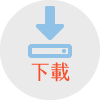簡易檢索 / 詳目顯示
| 研究生: |
李長榮 CHANG - JUNG LEE |
|---|---|
| 論文名稱: |
平衡計分卡之導入-以電子零件通路商為例 Implementing Balance Scorecard -Using Electrical Component Channel as an Example |
| 指導教授: |
陳正綱
Cheng-Kang Chen |
| 口試委員: |
吳宗成
none 楊維寧 none |
| 學位類別: |
碩士 Master |
| 系所名稱: |
管理學院 - 管理研究所 Graduate Institute of Management |
| 論文出版年: | 2005 |
| 畢業學年度: | 93 |
| 語文別: | 中文 |
| 論文頁數: | 60 |
| 中文關鍵詞: | 績效 、關鍵績效衡量指標 、電子零件通路商 、半導體 、平衡計分卡 、策略地圖 |
| 外文關鍵詞: | key performance index, KPI, Balance Scorecard, Strategy Maps |
| 相關次數: | 點閱:314 下載:8 |
| 分享至: |
| 查詢本校圖書館目錄 查詢臺灣博碩士論文知識加值系統 勘誤回報 |
平衡計分卡之導入-以電子零件通路商為例
Implementing Balance Scorecard -Using
Electrical Component Channel as an Example
論文摘要
有鑑於國內在半導體電子零件通路商實施平衡計分卡機制來管理產品線甚少,也很少使用其他的績效衡量管理制度,本研究將以國內之半導體體電子零組件通路商為研究對象,採用個案研究法,討論以下主題:
1如何依據半導體體電子零組件通路商產業特性建構產品策略的策略地圖。
2如何定位依半導體體電子零組件通路商產業特性的關鍵的績效衡量指標,此指標能夠依照企業的願景及策略來完成。
3透過企業訪談了解半導體體電子零組件通路商實施平衡計分卡的導入過程,及導入的組織變動,導入前後的公司內部變化及反應。
半導體電子零件通路商在面臨產業競爭及產業外移的雙重壓力之下,經營者如何的找出對企業的關鍵的績效衡量指標KPI,來透過平衡計分卡的實施長久及有計畫的經營產品線,訓練人才及培育。
本研究採個案研究方法個案公司為半導體電子零件通路商。探討個案公司導入平衡計分卡建構流程,及各流程的細節,並將訪談資料做分析整理。
上述資料獲得結論如下:
1平衡計分卡的導入能幫助公司組織明顯定義績效,預防部門間彼此推卸責任,影響到公司的營收績效。
2平衡計分卡的導入能幫助個案公司體檢代理產品線的潛力分析,使公司對資源的適放能夠依產品性質及時間階段做調整,免除對產品線績效認定問題,造成公司人才的流失。
3平衡計分卡的導入能幫助個案公司對於人力資源的認同,加強對員工的培訓,使個案公司獲得重要人力資產。
研究結果可提供個案公司建議及半導體電子零件通路商產業建構平衡計分卡管理制度之參考,尤以半導體電子零件通路商產業屬於高度競爭產業,經營者更應體檢自己的代理產品線及經營績效如何建立,建立自己的特質以求在產業界永續經營。
ABSTRACT
Owing to less semi-conductor component channel distributors are using balance scorecard of management system to handle their product lines, also lack suitable performance management system to oversee & improve their business. Therefore, this study was made according to domestic semiconductor component distributor as main role, the following are the topics:
1How to settle up the strategy map for semiconductor component channel distributors to meet this industry of characteristic.
2How to build up the key performance index for semi-conductor component channel distributors?
3By means of interviewing with the enterprises to see the internal reaction during different periods, it was divided into three periods: Before starting the balance scorecard system, then proceed and after proceeding the system.
This study specified enterprise how to proceed the balance scorecard to find out the suitable KPI for individual demand to run their business more successfully and well training their workforce
This study was proceeded according to individual case, discussing the procedure which individual enterprise how to start to use the balance scorecard system and details during the process. The following is the conclusion of our study:
1Balance scorecard of system can help enterprise to define the performance obviously. It would helpful to prevent the uncertain job function to be occurred between different departments.
2Balance scorecard system is available to identify the potential product line which the enterprise is planning to run or running currently. This feature can help the enterprise to release the resources properly and control it at the best timing. Also can prevent to mishandle the product line of performance and reduce the loss of workforce.
3Balance scorecard is available to help enterprise to emphasize the importance of human resources, also can enhance the human resources of value by means of well training their employees.
This study is available to provide semi-conductor component channel distributors a point of view for how to start the balance scorecard of system. Especially this industry is standing at highly competitive stage, each CEO should pay more attention to check and study for how to select & settle up the successful product line & key performance index to control the business, and then available to establish long-term and successfully business among their industry.
參考文獻
中文文獻
1.科普朗、諾頓著,朱道凱譯,1999,U平衡計分卡U,台北:臉譜文化。
2.科普朗、諾頓著,陳正平譯,2004,U策略地圖U,台北:臉譜文化。
3.于泳泓、陳依蘋著,2004,U平衡計分卡完全教戰手冊U,梅霖文化
4.科普朗、諾頓著,遠擎管理顧問公司譯,2001,U策略核心組織U,台北:臉譜文化。
5.科普朗、庫柏著,徐暁慧譯,2000,U成本與效應U,台北:臉譜文化。
6.吳安妮,2002,淺談平衡計分卡成功實施之經髓概念,會計研究月刊,第198期,頁26-32。
7.NILS-GORAN OLVE、JAN ROY、MAGNUS WETTER、CEPRO MANAGEMENT CONSULTANTS等著,吳品清譯,2005,U平衡計分卡實戰指南U,麗勤管理顧問。
8.李郁卿,2002,推動以均衡計分卡為基礎的績效管理制度之個案研究—以一外商食品公司為例,中山大學人力資源管理研究所碩士論文。
9.吳明通,2003,企業導入平衡計分卡之績效研究—以帝強鋼鐵為例中山大學管理學院碩士論文。
10.王清弘,1999,企業建立平衡計分卡之研究,國立政治大學資訊管理學系碩士論文。
11.張淑玲,2004,併購動機、整合機制與績效評估—以平衡計分卡為例,成功大學企業管理研究所碩士論文。
12.林季慶,2003,平衡計分卡於半導體產業策略管理之設計—以某積體電路(IC)設計,國立中正大學會計學研究所碩士論文。
13.廖清祈,2003,企業推動平衡計分卡過程之跨個案研究,國立中正大學企業管理研究所碩士論文。
14.胡聖生,2001,我國半導體零件通路商產業之競爭策略分析—以世平興業股份有限公司為例,中山大學企業管理學系碩士論文。
15.張文潭,2003,電子零組件通路商未來發展策略之個案研究,國立政治大學商學院碩士論文。
16.王子杰,2003,策略聯盟下之平衡計分卡探討─以LED業為例,
元智大學工業工程與管理研究所碩士論文。
17.陳明璋,1999,平衡計分卡在中小企業的應用,國立台北大學企業管理學系碩士論文。
18.張家鳳,2000,企業建立平衡計分卡以落實策略管理之個案研究,東吳大學企業管理學系碩士論文。
19.鄒育菁,1999,應用Poretr之策略理論於平衡計分卡的規劃與設計,交通大學運輸工程與管理系碩士論文。
20.謝方彥,2000,以平衡計分卡觀點設計企業資源規劃系統績效評估制度之研究,淡江大學會計學系碩士論文。
21.劉長昀,2001,以平衡計分卡觀點探討企業核心資源與經營效率─以台灣某電子公司為例,國防管理學院國防財務資源研究所碩士論文。
英文文獻
1.Kaplan,R.S., Norton D. P., 1992, The Balanced scoredcard-Measure that drive performance, Havard Business Review P71-79.
2.Kaplan,RS., Norton D. P., 1992 The Balanced scoredcard As a strategic system,Havard Business Review, P75-84.
3.Kaplan,R.S., Norton D. P., 1993 The Balanced scoredcard,Putting to Work Havard Business Review, P134- 84.
4.Kaplan,R. S., Norton D. P., 1996,strategic learning and the balanced scoredcard,STRATEGY&leadship,vo.l24,no.5,pp18-24.
5.Kaplan,R. S., Norton D. P., 1996 , Link the balanced scoredcard to strategy,California Management Review ,vol.39,no.1 ,pp53-79.
6.Porter,M.E.,1996” What is strategy?” Havard Business Review ,Nov/Dec, pp.61-78.
7.Robert M .Grant,Contemporary Strategy Analysis,Blackwell(1993)
8.Brady,L D.(1993),"Implemention the balanced scoredcard at FMC corporation:"An interview with Larry D.Brady. Havard Business Review , pp.143-147.
9. Kaplan,R. S.,2003,"Five Question About...Strategy Maps", Havard Business Review ,
10. Norton D. P.,2003,"Use Strategy Maps to Communicate your Strategy", Havard Business Review ,
11.Kaplan,R. S., Norton D. P.,2001C ,The Strategy –Focused Organization,
the Havard Business School Press .
12.Robert K.Yin(1994),Case Study Research:Design and Method,age Publications,Inc.
13.Paul R.Niven(2002),Balanced Scorecard Step by Step:Maximizing Performance and Maintaining Results,New York:John Wiley & Sons.
